Christmas cactus are sturdy tropical plants. But even being such a resilient plant, they are quite vulnerable to root rot. If kept in unfavorable conditions, they are likely to develop root rot.
You must act upon it immediately to save them, or you may lose them forever. But why does Christmas cactus develop root rot?
Overwatering is a well-known culprit for creating an unfavorable environment in the plant and leading to root rot. The roots cannot function and become weak and vulnerable due to suffocation. Christmas cactus prefer well-draining aerated soil to allow easy air and water flow.
The Christmas cactus is easily affected by root rot due to a few sessions of over-watering. You need to be extra cautious while watering your plant.
Allowing the excess water to flow and letting the soil dry are prime points to keep in mind.
With all these, we will further understand the plant’s requirements and the causes of root rot.
We will also learn ways to treat and prevent root rot in the Christmas cactus.
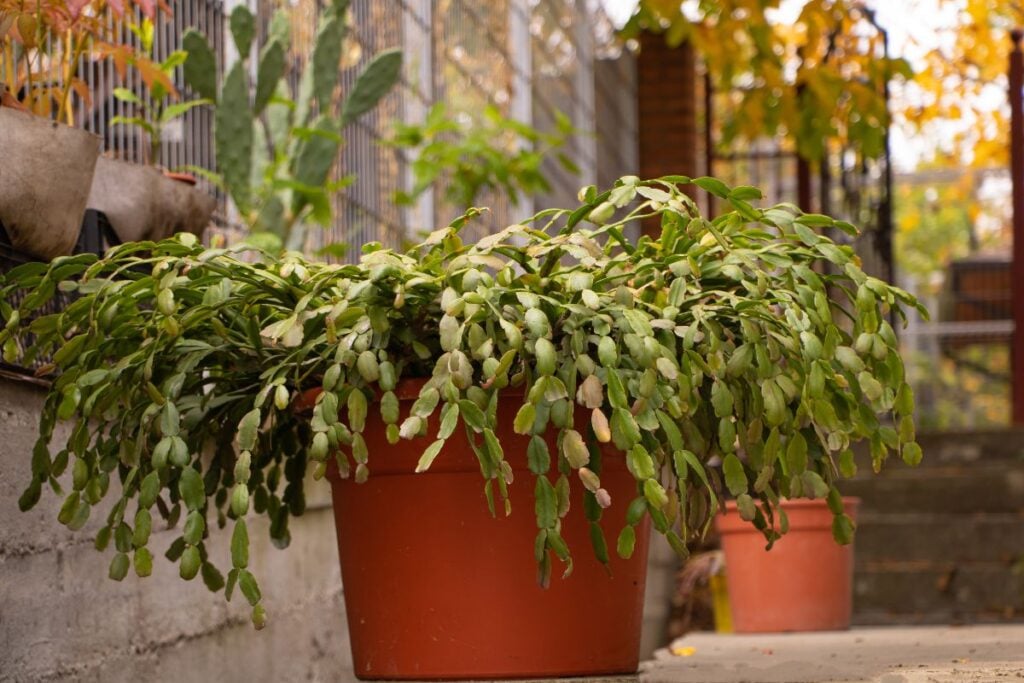
Signs of root rot in Christmas cactus
Roots are the part of plants that are not visible due to which any problem with them is not easily detected.
Symptoms of root rot are similar to other issues, so concluding root rot by just seeing one sign is not right.
Before concluding, analyze the situation and list other related options.
If you find the following signs from your Christmas cactus, then root rot might be the issue, but inspecting the roots is the ultimate way to confirm the condition.
- Mushy and brown roots
- Wilted growth
- Soft stem segments
- Foul odor from the soil or roots
- Yellow leaves
- Brown tips
- Stunted growth
Let us understand these signs deeply:
Foul odor from the soil or roots
If your Christmas cactus emits a foul odor, it is a matter of stress because it is a bad sign.
The odor could be coming from roots or soil, and the chances of root rot are the highest. This smell means a significant part of the plant is decayed.
You must take immediate action and follow the right treatment to save them. The chances are less in such conditions, but trying is all you can do.
If the leaves look okay, you may still save your plant but only after inspecting the roots will tell the tale. Stop watering them completely till you complete the treatment.
Yellow or brown leaves

Leaves of any plant are the first thing visible to us, and any problem with the plant reflects through them sooner or later.
Overwatering is a major cause of yellow leaves and root rot, as the growing medium collapses and suffocates due to excess water or poor drainage.
Yellow leaves could indicate other possible issues, such as pests because they feed on them, leading to discoloration, dropping, and eventually dying.
Look closely for pests if you see yellow or brown leaves on them.
After that, check the soil.
You can dig a finger into the soil from the top, then take it out and check if the soil is moist. If yes, then the probability of root rot is quite significant.
Stunted growth
Christmas cactus grows during spring and summer and bloom in late November. It is completely normal if your Christmas cactus is not growing in the dormant period.
If you have newly bought the plant and it’s not growing, it is still okay; just give them some time to acclimate to the new condition.
If it’s been a long time and they are not showing any growth even after proper care, then you need to look further for the possible reasons.
The possible reason could be low light, over or under fertilization, or root rot, which you need to find out by looking for more signs confirming the condition.
Looking for gardening supplies? We have tested 100's of products before recommending them to you guys. Check out our best pick below:
| Image | Gardening Supplies | Best Price? |
|---|---|---|
 Top
Top Top
Top | Raised Garden Bed Kit | Check On Amazon |
 | XLUX Soil Moisture Meter, Plant Water Monitor, Soil Hygrometer Sensor for Gardening, Farming, Indoor and Outdoor Plants, No Batteries Required | No Results |
 Top
Top Top
Top | 82 Pcs Garden Tools Set and Extra Succulent Tools Set | Check On Amazon |
 | Joeys Garden Expandable Garden Hose with 8 Function Hose Nozzle, Lightweight Anti-Kink Flexible Garden Hoses, Extra Strength Fabric with Double Latex Core, (50 FT, Black) | No Results |
 Top
Top Top
Top | Dual Chamber Compost Tumbler | Check On Amazon |
 Top
Top Top
Top | Sunnyglade Plant Stakes | Check On Amazon |
 Top
Top Top
Top | Organic Cold Pressed Neem Seed Oil | Check On Amazon |
 Top
Top Top
Top | Mighty Mint Gallon :-Insect and Pest Control Peppermint Oil | Check On Amazon |
 Top
Top Top
Top | Scotts DiseaseEx Lawn Fungicide | Check On Amazon |
 Top
Top Top
Top | Jacks Classic 20-20-20 All Purpose Fertilizer | Check On Amazon |
 Top
Top Top
Top | 30,000 Seeds Pollinator Attracting Wildflower Mixture | Check On Amazon |
 Top
Top Top
Top | Survival Vegetable Seeds Garden Kit-Over 16,000 Seeds | Check On Amazon |
Brown, mushy and flaky roots
The healthy roots of the Christmas cactus are firm, white, and crusty. If the roots are mushy, brown, and soft, they have suffered from root rot.
Roots will break simply by holding them; they have become weak and lifeless.
The soil is also not spared; it has been infected as well and cannot be used or trusted to grow your plant anymore.
You can touch and feel the roots, and if they have turned fully brown or black, then the chances are that they are completely damaged and dead.
Dig the soil a bit; though it may be a hassle, it will only help you to find if the plant is okay or not. You might soon lose your plant to root rot if you ignore it.
Droopy or wilted leaves
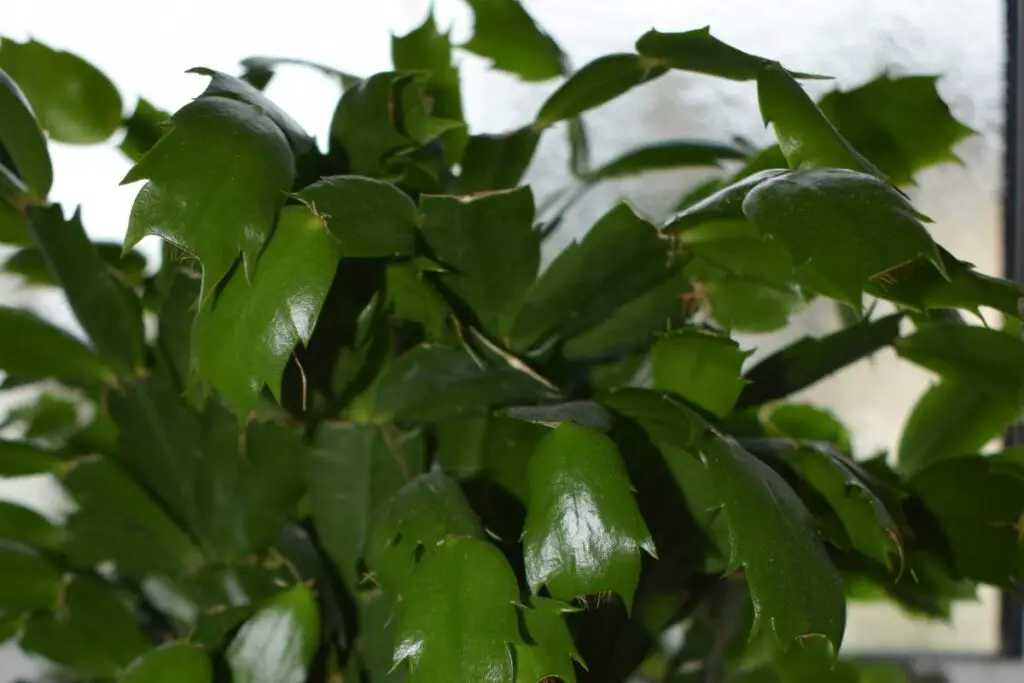
Droopy or wilted leaves are the result of environmental stress or improper care.
They are stressed mostly due to overwatering or too much light, and too much sun dehydrates the leaves directly, making them wilt or limp.
If you are frequently moving Christmas cactus from one location to another, it could be the reason for the wilted and droopy leaves.
Watering too much or too little can also cause droopy or wilted leaves; they lack water and nutrients as the soil can’t supply them. That makes the soil droopy or wilted in the beginning.
If the situation progresses, it will soon lead to root rot, and if you do not look into the matter, you will damage the roots and soil completely.
Feeling the soil is the first thing you need to do and further dig into the soil to see if it is wet.
Brown tips
Brown tips on Christmas cactus may be due to several reasons like too much direct light, over-fertilization, and root rot. You have to be on high alert if you see such signs.
Too much sun can burn the leaves, cause brown tips and damage them completely if not moved to a shady spot or protected from direct sun.
Overfertilization is also unhealthy for Christmas cactus, the roots will burn, and the effect will be seen on leaves with brown tips. They are light feeders, and too much food can cause more problems.
Root rot is always on the list when you see brown tips. The plant might have been overwatered, suffocating the roots and soil; thus, the roots cannot supply water and nutrients to the leaves, leading to brown tips.
If the drainage is poor, it adds to the condition and further progresses root rot.
What causes root rot in the Christmas cactus?
There are several causes of root rot in the Christmas cactus. We have discussed a few major causes down below.
Overwatering
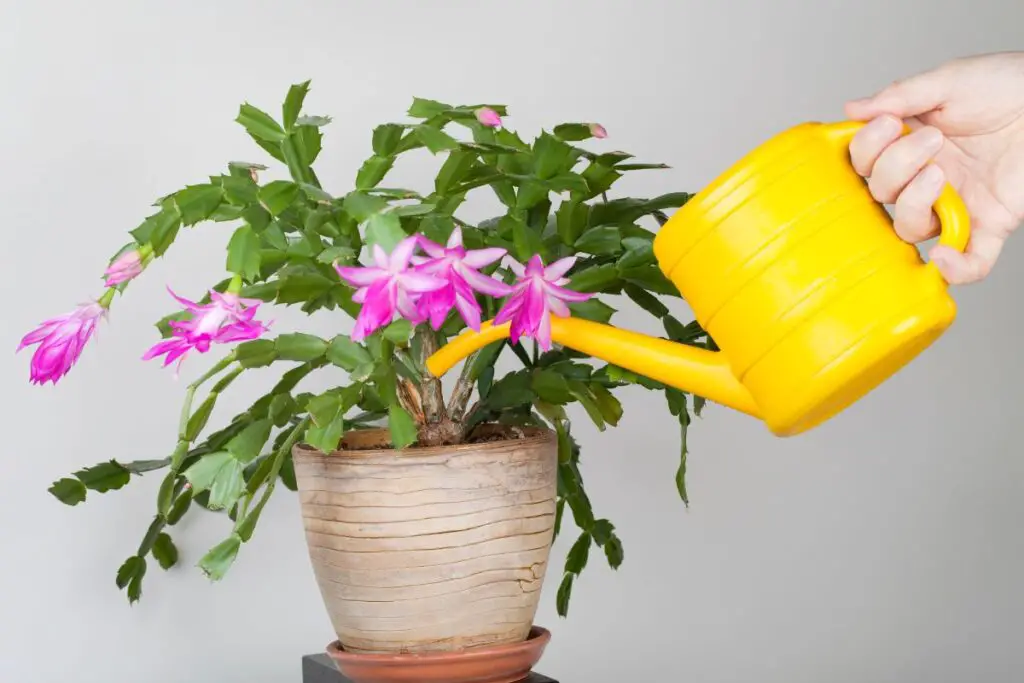
Overwatering is the easiest way to damage and kill your Christmas cactus. They do not like wet feet, and staying in soggy soil for prolonged periods can damage each part permanently.
The plant will succumb to root rot with frequent watering without letting it dry. It is a common issue with Christmas cacti as they are easily affected by root rot.
You need to water them only when the soil is dry and be cautious whenever you decide to water them.
If you are not sure, then avoid watering and wait for some days when you are sure that they need water.
If overwatered, the soil develops lumps which also give a perfect environment for the fungus and bacteria to grow and develop.
They also attract pests that can weaken your plant and lead to root rot.
The key to prevent overwatering is feeling the soil before watering them.
Avoid following any watering regime without checking on the soil. If overwatered, swiftly decisive action is the need of the hour.
Also read: How Often To Water Christmas Cactus? (Water Requirement+Tips)
Inadequate drainage
With watering issues sorted, the eye goes to the drainage system of the pot.
If the drainage holes are inadequate, the soil will sit in water, creating several future issues.
Also, when the pot sits on a saucer after watering for more than an hour, it will lead to soggy soil.
The Christmas cactus will take up more water than required and stay overwatered.
Inadequate drainage holes block the excess water from flowing out, and even if you are watering right, the excess water stays in the soil, and roots will develop fungus and bacteria.
It is one of the ignorant factors that goes ignored, resulting in overwatering.
So you might be unaware of the situation and mistake it with overwatering.
Check the drainage holes rather. Root rot might be progressing and will soon kill your plant if left unnoticed.
Overfertilization
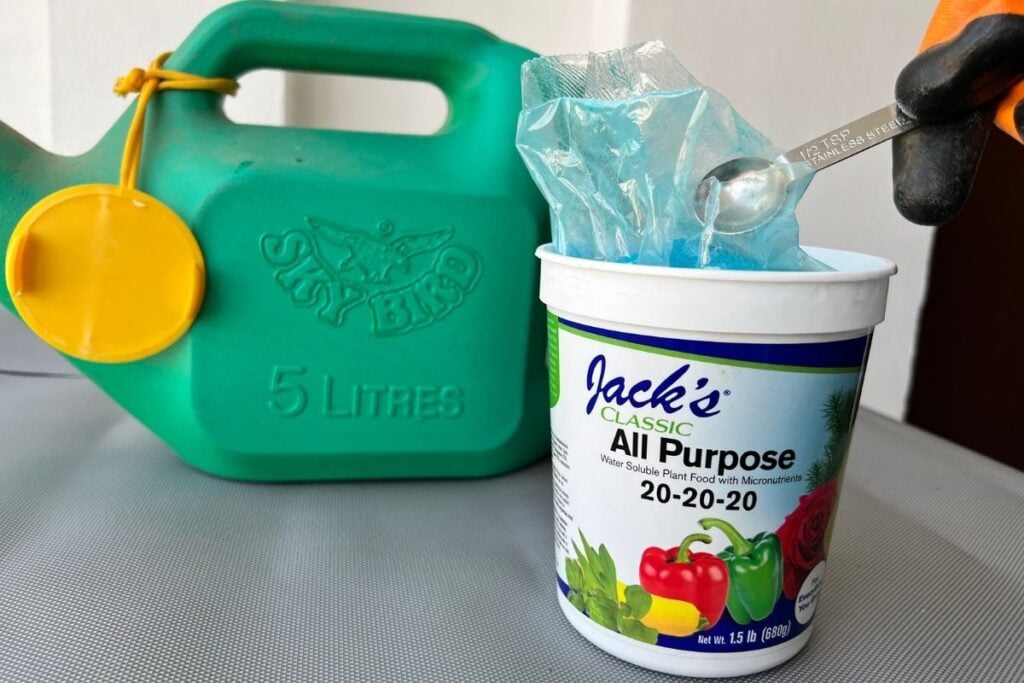
If you have noticed leggy growth, brown tips, salt build-ups, and stunted growth lately on your Christmas cactus, then the chance is that over-fertilization is the culprit.
Christmas cactus need fertilizer for a nutrient boost, healthy growth, and healthy flowers. This doesn’t mean you can keep feeding them; it should be in the right dosage and at the right time.
It would be best if you did not feed them in dormancy, it can shock them, and the buds will fall.
Excess fertilizer increases the salt in the soil and pushes plant growth.
It will boost their growth at once, stressing them and causing permanent damage to their growth and health. That can also lead to a root rot situation.
Also read: Do Christmas Cactus Need Fertilizer? (How Often+Best Pick)
Size of the pot
The size of the pot is an important factor in the growth of any plant. Many planters overlook and plant their plants in any pot they like.
If the pot is oversized, it can frequent overwatering as larger pots take more time to dry out.
That makes it difficult for the plant to release excess water, and the soil stays moist most of the time without being noticed.
The size of the pots should be according to the size of the plant. For instance, if the plant’s length is 1 foot, the ideal size pot for it is 2 gallons.
If the size is improper, the roots and soil can absorb water and nutrients in the right amount. That results in slower growth and affects their blooming.
Type of potting soil
Christmas cactus-like well-draining nutrient-rich potting media like one with compost or perlite.
That is required to allow the water and airflow with ease and help prevent overwatering.
You will notice frequent overwatering and root rot issues with heavy or garden soil. That can even make the plant sick as they cannot supply water and nutrients to all parts of the plant.
Sometimes the soil is contaminated, so it is recommended to repot your Christmas cactus with a fresh potting soil suitable for them.
Right soil decides the life and health of the plant. If your plant is happy, a lot of credit goes to the soil mix. It allows the roots to flourish and absorb the right amount of minerals and water as well.
If you feel any pungent smell coming out of the soil, then the signal is towards root rot.
Also read: What Kind Of Soil Is Best For A Christmas Cactus? (+Best Soil Mix)
Other causes
There could be other causes for your plants’ bad condition. You should always look at your plant when you newly bought it. They might suffer from the inside and look healthy from the outside.
They might have been stressed due to the long journey from one location to another. If you stress them, they will attract root rot or other diseases.
You might have fertilized them thinking they may need it after stress, but you have now stressed them even more. You don’t know when these plants have been fed last.
Keep a newly bought plant in isolation to avoid spreading any disease to other plants. Properly inspect them to make sure they are fine from inside and outside.
Another thing you might be overlooking is sterilizing your tools and pruners while clipping. You may spread disease or pests by doing this. Sterilize always before using them.
Give your plant time and treat all the issues one by one to avoid stressing them anymore.
How to fix root rot in the Christmas cactus?
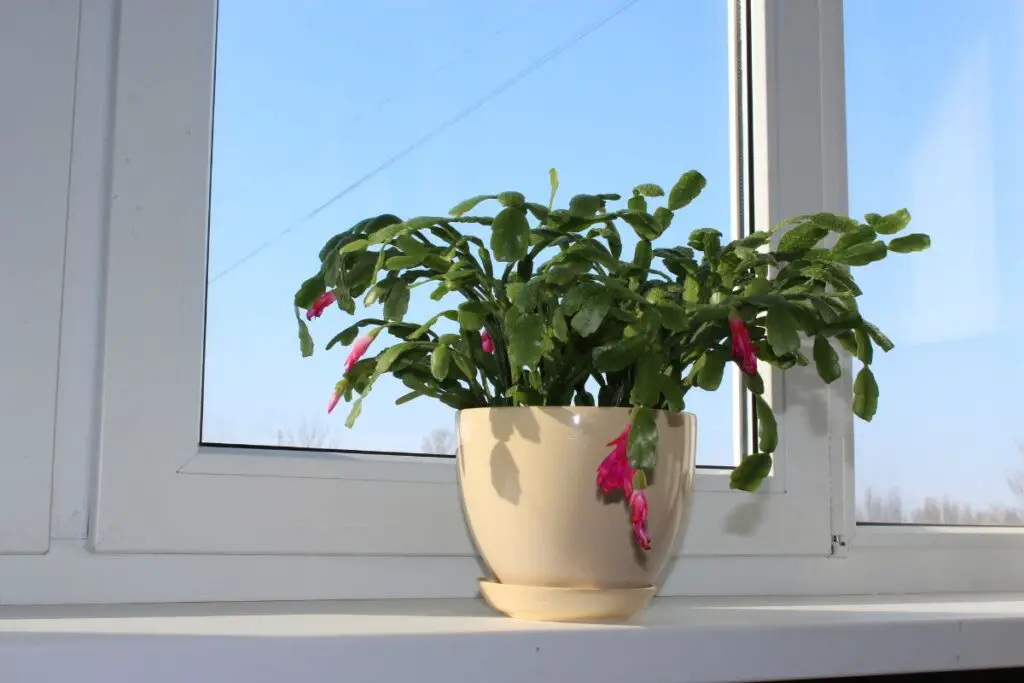
Fixing the root rot is very important, and repotting is the best way to do that. Propagation is also helpful to save your plant in case you lose it to repotting.
We hope the root rot condition has not worsened, so you have the chance to save it.
You will need the following things to perform the repotting:
- Scissors
- Disinfectant
- A new pot
- Bleach
To repot:
- Start by gently pulling the Christmas cactus out of the pot because you don’t want to damage the roots.
- Remove the soil on the roots and wash the plant under running water. It will help to flush out the soil.
- Now use clean, sterilized scissors to trim away the infected and damaged brown, mushy, and weak roots.
- Keep the plant on a paper towel in the warm fresh air to dry overnight.
- Inspect the leaves too; if you find any damaged leaves, clip them too.
- Discard the damaged leaves and infected soil completely to avoid spreading the disease.
- Take a pot according to the size of the plant; if using the previous pot, then wash the pot with a bleach solution to remove fungus and bacteria.
- Let the pot dry out completely.
- Now place some stones at the bottom of the pot to facilitate the drainage system. Now add the soil mix to the pot.
- Place the plant in the middle and add more soil to settle the plant. Ensure the roots are intact and the plant is set without pressure. Do not leave any air pockets in the soil.
- Water them once and check the drainage system; the excess water should drain within 2 minutes of watering.
- Avoid fertilizing for at least a month. They will do fine without it. Let the plant adapt to the situation.
- If the root rot has not progressed, you can save them with repot.
- Do not hurry or stress them to get them growing. Just provide them with proper care and no extra stress. Good lighting will help them grow and overcome the situation fast.
How to prevent root rot in Christmas cactus?
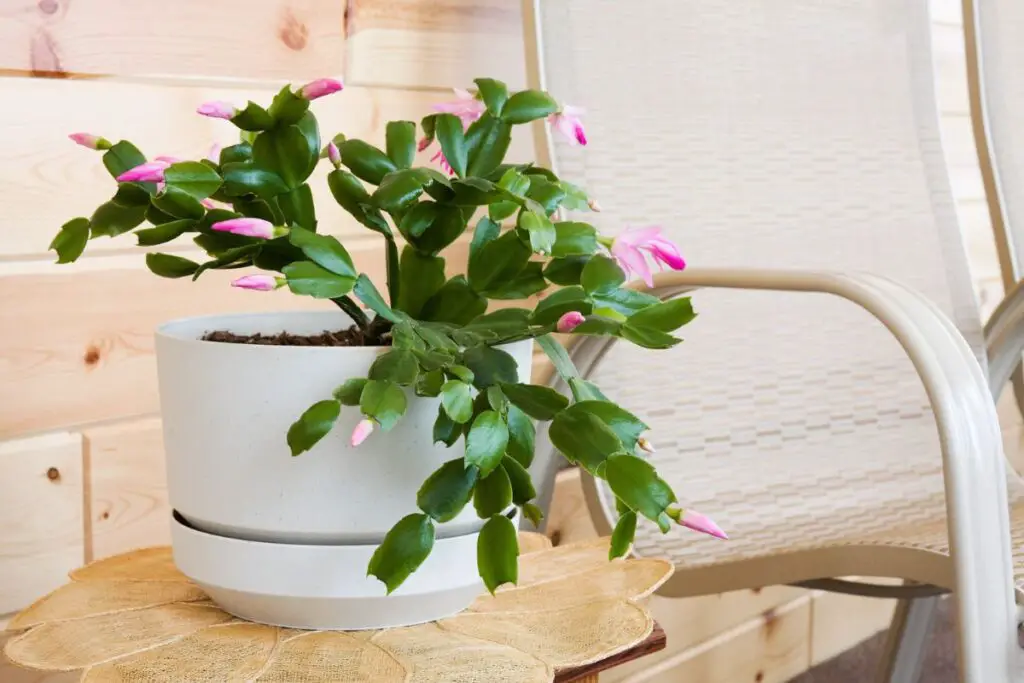
Christmas cactus are hardy plants that cannot be stressed easily. But sometimes, with consistent poor care and an unfavorable environment, they may suffer.
We can prevent root rot if we follow some rules. They are:
- Avoid overwatering your plant.
- Do not follow any watering regime blindly.
- Feel the soil before watering them to make sure it is dry.
- Feed in the right amount and never feed during the dormant period.
- Use well-draining and nutrient-rich potting soil.
- Ensure proper drainage system.
- Maintain high temperature and high humidity around them.
- RIght-sized pot.
- Avoid frequent movement of the plant.
- Mist to maintain humidity around them.
You should keep the above points on point to avoid root rot and other issues. They are the right way to keep your plant healthy and thriving.
Always keep an eye on your plant. If you notice something kosher, take extra time to identify the problem. They have little care needs, which you may easily fulfill.
How can I make my Christmas cactus grow faster?
We can always put some extra effort into the better growth of the Christmas cactus. Let’s learn how:
- Provide bright indirect light for at least 6 hours a day.
- Water wholly to enable excess water to drain out completely.
- Feel the soil to decide if it is moist or ready to be watered.
- Prune the stems after blooming is over for better growth and healthy stems.
- Disinfect the tools before and after using them.
- Never fertilize in the idle period as they are not actively growing during this time.
- Keep them away from cold and hot drafts.
Reference: NC State University, Nebraska Extension in Lancaster County, Researchgate, Texas A&M University, Chicago Botanic Garden.
